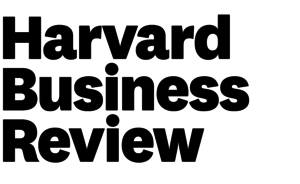Clarify Roles
Description
These resources will help you to translate your company's sustainability commitments into responsibilities that are assigned to appropriate roles and incorporated into personal goal-setting across the business, including the most senior leaders.
Share this Practice on:LinkedIn
Resources
Next-Generation Corporate Responsibility and Sustainability Jobs
As industries embrace and embed sustainability into their planning, processes, and culture, a new imperative has emerged to transition the role and skills - and job description - of CSR and sustainability professionals from an operational to a strategic focus. This briefing provides ideas and examples that will help you to inform and adjust job description updates and performance and professional development plans, and will be particularly helpful for sustainability practitioners and recruitment professionals.
The Role of Human Resource Management in Corporate Social Responsibility
This is a useful resource if you are looking to partner with HR in your company. This guide provides helpful background research on the connection between sustainability and a variety of HR functions, including recruitment, onboarding, and employee development. It also lays out ten steps that HR managers can take to support embedding sustainability within their organisation, along with examples from leading companies.
The 8 Responsibilities of Chief Sustainability Officers
A growing number of companies are appointing chief sustainability officers, and there remains a lack of clarity about a CSO’s tasks and accountabilities. This article highlights eight distinct tasks and a visual framework that can help CSOs - and other senior leaders - ensure that each responsibility receives sufficient attention, effort, and allocation of resources.
Making Sustainability Count: How to embed sustainability in leaders’ objectives
Embedding sustainability into business strategy and operations depends on sustainability manifesting within the objectives and incentives of senior leaders. This report explores three aspects of objective-setting that will help you to ensure that sustainability is effectively integrated throughout your business: how priorities are set, how work gets done, and how leaders are rewarded.
Integrated Performance Management (IPM): Driving strategy, engaging workforces
This framework developed by AICPA & CIMA and WBCSD can help you align your performance management system with delivering on your sustainability strategy. It presents an integrated performance management (IPM) framework that addresses four key things: shifting the ‘power hierarchy’ of organisations; process mapping to identify initiatives and how they influence strategy; better aligning employee goals with organisational objectives through budgeting and reward systems; and creating a performance culture that centers people. Additional guidance supporting the implementation of the framework is presented in chapters 6-8, including how to measure success and plan a path forward based on the IPM maturity model. This guidance will be most useful to senior management and HR teams.
Chapter 8 in Leading Sustainable Change: An Organizational Perspective
This will be a valuable resource if your organisation is early on in its efforts to embed sustainability and is looking for ways to draft more precise and encompassing job descriptions. It will help you understand how your responsibilities may change over time as sustainability becomes more embedded at your organisation. The chapter is based on a 2013 study by authors Kathleen Miller from the Boston Consulting Group and George Serafeim from Harvard University.
Share this Practice on:LinkedIn




